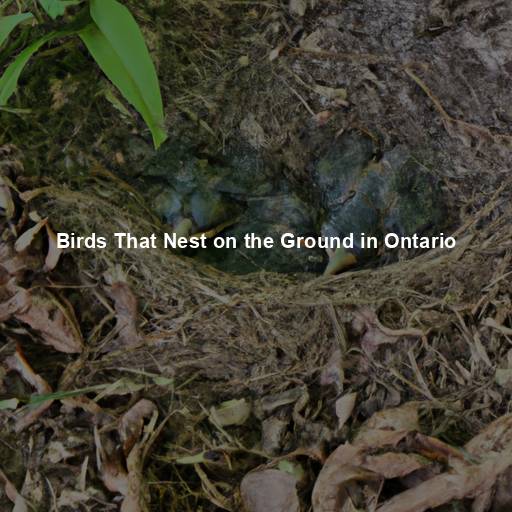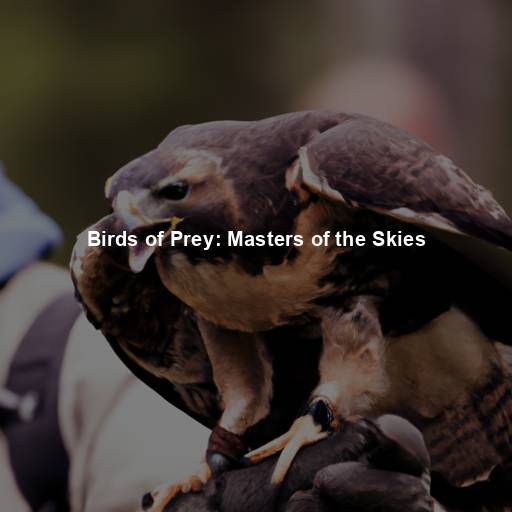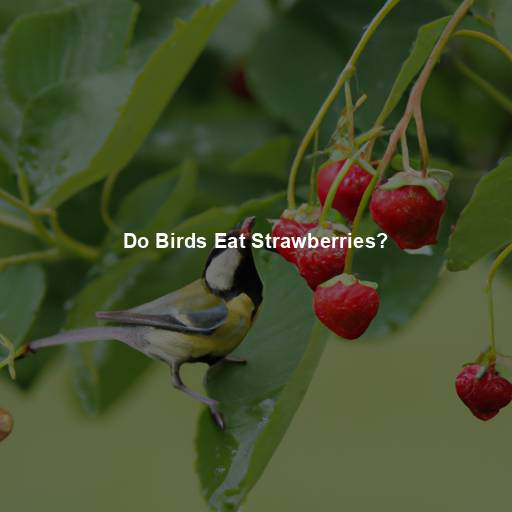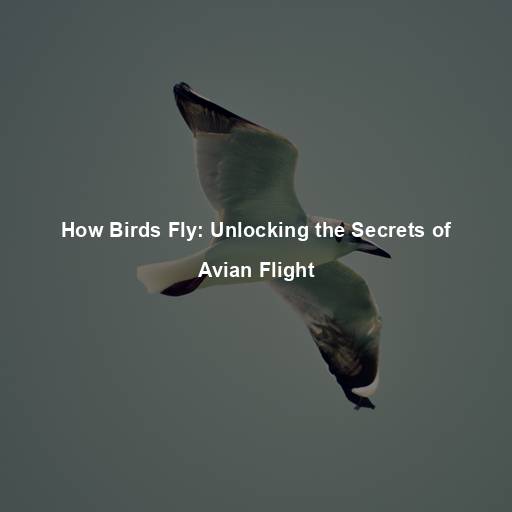Which Birds Eat Fish: A Fascinating Look into Avian Diets
Last Updated on August 5, 2023 by Evan
Contents [hide]
Understanding Avian Diets: Beyond Seeds and Insects
Birds, with their incredible diversity, have evolved to occupy various ecological niches. While many species are known for their preference for seeds, fruits, or insects, there is a captivating subset of birds that have developed a taste for fish. These piscivorous birds have adapted their behaviors, anatomy, and feeding strategies to exploit aquatic habitats and feed on the abundant marine life. In this article, we will delve deep into the world of fish-eating birds, exploring their unique characteristics, remarkable adaptations, and the ecological significance of their dietary choices.
Exploring Piscivorous Birds: A Diverse Group
Cormorants and Shags
When it comes to ruling the realm of piscivory, cormorants and shags are hailed as the true masters, leaving us in awe of their prowess. Their sleek bodies, elongated necks, and webbed feet make them the underwater adventurers we can only dream of becoming. Equipped with specialized hooked bills for capturing elusive prey and buoyancy-reducing plumage, these elegant birds are a sight to behold as they perch on rocks or gracefully dry their wings after a fruitful fishing expedition.
Ospreys: Masters of the Dive
There’s something truly mesmerizing about ospreys, commonly called fish hawks, and their unparalleled prowess in the realm of fishing. These magnificent birds possess a set of extraordinary attributes that make them stand out in the avian world. With their razor-sharp talons and cunningly designed reversible outer toes, ospreys have mastered the art of capturing fish with an unrivaled level of accuracy. What truly sets them apart is their remarkable vision, enabling them to spot their finned prey even from dizzying heights.
Kingfishers: Aquatic Jewel Hunters
When it comes to aquatic prowess, kingfishers reign supreme. Their striking appearance and distinctively sleek bills make them the darlings of the avian world. But what truly sets them apart is their exceptional hunting skills. With unwavering patience, they perch on branches or hover above the water, their eyes trained for the opportune moment to plunge into the depths with astonishing swiftness.
Herons and Egrets: Graceful Fishers
In the realm of avian elegance, herons and egrets stand tall (literally) with their regal stance and gracefully elongated necks. These magnificent wading birds have honed their fish-catching skills to a sophisticated degree, making wetland habitats their preferred hunting grounds. Patiently they prowl, every step a careful calculation, studying the dance of light on the water’s surface. And then, with a swift, precise motion, they plunge into the aqueous depths, snatching their finned feast with an expertise that leaves us in awe of nature’s enigmatic ways.
Pelicans: Skilled Plunge Divers
Pelicans, with their large, expandable throat pouches, are renowned for their unique feeding behavior. These magnificent birds plunge dive from the air, using their keen eyesight to spot fish beneath the water’s surface. Once they have located their prey, they dive into the water, scooping up fish in their pouches. Pelicans then drain the water from their pouches before swallowing their catch, a fascinating spectacle of nature’s ingenuity.
Ecological Significance of Piscivorous Birds
Fish-eating birds play a vital and enigmatic role in the intricate tapestry of our world’s ecosystems. As they gracefully soar through the skies and plunge into the depths of aquatic realms, these avian predators are like enigmatic guardians, ensuring the delicate balance of life is maintained. Through their predation, they offer a perplexing dance of burstiness, selectively targeting the most vulnerable and diseased fish, thus safeguarding the ecological harmony. But their influence doesn’t end there; their nutrient-rich droppings act as a mysterious caress, nourishing the surrounding habitats and providing a bountiful feast for a myriad of other organisms.
Furthermore, the hunting behaviors of piscivorous birds can have cascading effects on the entire food web. For instance, when ospreys or cormorants feed on fish, they may inadvertently influence the behavior of their prey. Fish may become more cautious, altering their feeding patterns or seeking shelter, which can, in turn, impact the distribution and abundance of other species within the ecosystem. The intricate interplay between predators and prey is a fascinating aspect of ecological dynamics.
Conservation Challenges and Future Perspectives
While piscivorous birds have adapted to exploit aquatic resources, they are not exempt from the challenges faced by many other avian species. Loss of wetland habitats, pollution, overfishing, and climate change pose significant threats to these birds and the ecosystems they inhabit. As responsible stewards of the environment, it is our duty to conserve and protect the habitats on which these remarkable birds depend.
Efforts to preserve wetlands, regulate fishing practices, and reduce pollution are crucial steps in ensuring the survival of fish-eating birds. By supporting conservation organizations, participating in citizen science initiatives, and advocating for sustainable practices, we can contribute to the long-term well-being of these avian wonders and the ecosystems they call home.
Foraging Techniques
When it comes to fishing, birds are no amateurs. They have mastered a range of techniques to satisfy their piscivorous cravings. From the impressive pursuit diving of cormorants and shags to the crafty strategies employed by ospreys and kingfishers, these feathered hunters definitely know how to make a splash in the world of aquatic prey capture. They keep us on our toes with their diverse hunting repertoire.
Diving deep into the cool depths of the ocean, cormorants and shags unleash their mastery of pursuit diving. With unwavering determination, they rely on their robust wings to glide through the water, chasing their slippery prey. Their mesmerizing agility leaves onlookers in awe as they gracefully navigate the aquatic realm, defying gravity with each majestic flap. And when the perfect moment arises, their hooked bills strike with precision, capturing their prized catch and satisfying their insatiable hunger.
When it comes to plunge diving, pelicans have truly mastered the art. Picture this: these majestic creatures gracefully hover above the water, casting their keen eyes in search of their next meal. And just like a scene from a suspenseful movie, they make their move – diving headfirst with astonishing precision and speed. With their incredible expandable throat pouches, they effortlessly scoop up their prey, allowing the water to gracefully drain away before swallowing their delicious fishy reward.
Witness the awe-inspiring spectacle of nature’s hunting prowess with the enigmatic kingfishers. With their keen eyes and unwavering focus, these remarkable birds perch gracefully on branches or hover over shimmering waters, shrouded in anticipation. Suddenly, like a bolt from the blue, they plunge beneath the surface with remarkable speed, leaving us breathless with their dexterity and precision. Emerging triumphantly, a glittering fish ensnared in their beaks, they unveil the sheer beauty and mystique of the animal kingdom’s underwater ballet.
Adaptations for Aquatic Hunting
Piscivorous birds have evolved remarkable adaptations to excel in their aquatic hunting endeavors. These adaptations enable them to navigate the challenges of capturing fish in water environments.
The incredible adaptations of cormorants and shags never cease to amaze. A crucial element to their underwater prowess lies in their specialized dense plumage which defies the laws of buoyancy. This unique feature enables these magnificent birds to effortlessly navigate the depths, enhancing their fishing skills and ensuring a feast fit for champions.
Discover the mind-boggling capabilities of ospreys as they unveil their unparalleled talent: reversible toes. With a mysterious twist of nature, these magnificent creatures possess the ability to seize their slippery fish prey with an unwavering grip. Feast your eyes on the perplexing adaptation that ensures the osprey’s dining experience is anything but ordinary.
- Keen Eyesight: Many fish-eating birds, such as ospreys and kingfishers, have exceptional eyesight. This keen vision enables them to spot fish from great distances, facilitating their hunting success.
Nesting and Breeding Habits
Delving into the enigmatic world of piscivorous birds, one cannot help but be captivated by their intriguing nesting and breeding habits. These avian marvels possess a repertoire of behaviors that are not only fascinating but also vital for the perpetuation of their species. With a flair for adaptability and an innate sense of survival, these feathered creatures navigate the perils of their aquatic environment, leaving us in awe of their elaborate strategies and mysterious rituals.
Imagine a world where birds of different species come together in a synchronized symphony of nesting. It’s a phenomenon known as colonial nesting, where herons and egrets unite, defying the norm and creating their own unique community. By clustering together, they not only shield themselves from predators but also forge a powerful collective defense, safeguarding their precious nests and future generations. A mesmerizing display of nature’s ingenuity, colonial nesting is a captivating glimpse into the intricate tapestry of avian society.
Witness the fascinating world of nest building, where cormorants and shags display their architectural prowess. Utilizing an eclectic mix of twigs, leaves, and various materials, these skilled avian artisans fashion intricate abodes. From lofty trees to weathered rocky ledges, their nesting choices perplex and amaze, ensuring their offspring a secure and elevated sanctuary as they embark on their remarkable journey of life.
Witness the mesmerizing spectacle of piscivorous birds as they embark on an enchanting journey of courtship during the breeding season. Behold their breathtaking aerial acrobatics, as they gracefully navigate the heavens, accompanied by an enchanting symphony of their exquisitely crafted vocalizations. Prepare to be captivated by their intricate dances, a sublime fusion of grace and rhythm, as they unveil their vibrant vitality, vying for the attention of prospective partners.
Migration Patterns
It’s truly remarkable how many of our beloved fish-eating birds embark on these extraordinary journeys, defying the odds as they traverse thousands of miles to find their ideal breeding or wintering spots. Their motivation to undertake these arduous trips lies in their relentless quest for abundant fish and the perfect nesting havens. As they navigate through vast expanses, their unwavering innate navigational prowess comes into play, honed by their acute sensitivity to environmental cues like the stars above or distinctive landmarks below. It’s a perplexing spectacle that leaves us in awe of their innate abilities.
Embarking on the epic voyage of migration, feathered creatures face a tumultuous journey filled with countless perils. Battling against relentless exhaustion, unpredictable weather swirls, and puzzling man-made barriers like habitat loss or perilous encounters with towering structures, these winged wanderers truly test the limits of their tenacity. To safeguard the livelihoods of these intrepid migratory species, it becomes paramount to champion conservation initiatives that shield vital stopover sites and safeguard the diverse tapestry of habitats lining their intricate migration routes.
The Coexistence of Piscivorous Birds and Humans: Challenges and Solutions
While fish-eating birds have coexisted with humans for centuries, conflicts can arise due to competition for resources or perceived threats to commercial fishing. Understanding the delicate balance between the needs of these birds and human activities is crucial in finding sustainable solutions.
The dynamic relationship between fish-eating birds and fishermen has often been marked by perceptions of competition. Yet, it is crucial to grasp the intricate ecological significance these birds hold in nurturing robust fish populations. By embracing conscientious fishing practices, which encompass sustainable harvest limits and safeguarding habitats, we can bridge the gap between these seemingly conflicting interests, safeguard bird populations, and secure the sustainable future of our fisheries.
Protecting and preserving the natural habitats where fish-eating birds thrive is of utmost importance. These awe-inspiring avian creatures heavily rely on wetlands for nourishment, nesting, and seeking refuge. It is imperative that our conservation initiatives prioritize the safeguarding and rejuvenation of these vital ecosystems, ensuring a sustainable future for these magnificent birds.
- Education and Awareness: Promoting public education and awareness about the ecological importance of fish-eating birds can foster appreciation and understanding. By raising awareness about the unique adaptations, behaviors, and challenges faced by these birds, we can encourage a sense of stewardship and inspire conservation efforts.
FAQs – Which birds eat fish
What are some birds that eat fish?
When it comes to feathery gourmands with a penchant for seafood, the avian world offers a delightful array of characters. From the regal osprey to the majestic bald eagle, the charming kingfisher to the stately heron, these birds embrace piscine fare with astonishing expertise. Joining this piscatorial party are the resourceful cormorant, the elegant pelican, and even the quintessential beach companion, the seagull. Each avian hunter possesses its own unique set of skills and adaptations, enabling them to indulge in an underwater feast fit for the avian connoisseur. Step into their audacious world, where fish are devoured with gusto and the dance between predator and prey unfolds with breathtaking flair. Soaring through the pages of this ornithological exploration, prepare to be captivated by the captivating narrative of these bewitching birds and their oh-so-delicious piscine pursuits.
How do birds catch fish?
Nature’s avian predators have developed an array of captivating techniques to secure their piscine meals. The osprey, a majestic hunter, astounds with its ability to hover effortlessly before launching into a breathtaking headfirst plunge, claws outstretched, to seize fish mere inches below the water’s surface. The kingfisher, a master of precision, executes a similar strategy, either diving from perches with astonishing accuracy or suspending itself mid-air before executing a swift dive, its beak a deadly weapon. In contrast, herons and egrets employ a more patient approach, gracefully wading through shallow waters, utilizing their elongated necks and razor-sharp beaks to impale unsuspecting fish. Seagulls, on the other hand, adopt a entirely different tactic, soaring above the shimmering waves and expertly plunging into the depths to snatch fish hidden just beneath the surface. These varied hunting styles demonstrate the ingenuity of these feathered hunters, leaving us in awe of their phenomenal adaptability in capturing their aquatic prey.
What adaptations do fish-eating birds have?
Birds that are skilled at catching and dining on fish have a range of remarkable features that help them navigate their watery world. Take ospreys, for example, with their impressive long talons that are perfectly curved for snatching fish mid-flight. To ensure a secure grip, these birds have the ability to reverse their outer toes, while spiny foot pads provide extra traction on slippery fish. Not to be outdone, many fish-loving birds sport sharp, hooked beaks that come in handy for capturing and holding onto their elusive prey. With their sleek bodies and robust wings, these avian hunters possess the agility to dive into the depths or hover effortlessly above the water’s surface, allowing for maximum fish-catching potential.
What types of fish do these birds eat?
Birds that dine on fish exhibit a fascinating kaleidoscope of preferences based on their surroundings and ecological niches. From dainty herring to mighty pike, a plethora of species occupy the menu for these fine feathered piscivores. Evidently, even grandiose creatures like ospreys and bald eagles don’t shy away from indulging in hefty servings of carp, catfish, and pike. Exceptionally adaptable, fish-eating birds might also venture beyond piscine offerings and supplement their diet with delectable crustaceans, amphibians, or diminutive waterbirds when piscine prospects dwindle.
Are fish-eating birds harmful to fish populations?
While fish-eating birds naturally feed on fish, their impact on fish populations is generally considered to be minimal. These birds are part of the natural food chain and play an important ecological role. Healthy fish populations can usually sustain the predation pressure by fish-eating birds without suffering damaging consequences. However, in localized or specific circumstances where fish populations are already under stress, such as overfishing or habitat degradation, the impact of fish-eating birds might have more noticeable effects. Nonetheless, managing the overall ecosystem’s health and maintaining a balanced fish population is crucial for the sustainability of both birds and fish.







